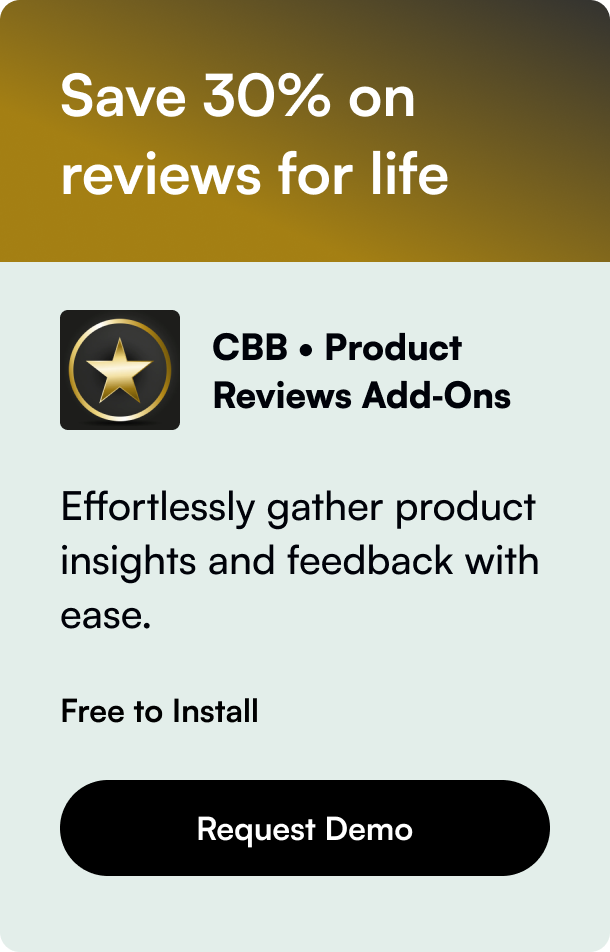Table of Contents
- Introduction
- Why Add PDF Files to Your Shopify Store?
- How to Upload and Manage PDF Files in Shopify
- Best Practices for Using PDF Files in Shopify
- FAQs
In today's digital age, where content reigns supreme, businesses on Shopify are constantly looking for ways to enhance their customers' experience. From in-depth product guides to comprehensive returns policies, the inclusion of PDF files on your Shopify site can significantly elevate the quality and accessibility of the information you provide. But how exactly do you go about adding a PDF file to your Shopify store? This blog post will walk you through the entire process, ensuring you're well-equipped to make your site more informative and user-friendly.
Introduction
Have you ever considered the potential of PDFs in enhancing your online store's user experience? Imagine a scenario where a customer can easily download a product manual or a detailed returns policy without having to navigate away from your page. This not only saves time but also adds a layer of professionalism to your site. As the e-commerce world becomes increasingly competitive, standing out requires offering more than just products; it's about providing a comprehensive shopping experience. This post aims to demystify the process of adding PDF files to your Shopify store, offering a simple yet detailed guide that will unlock new possibilities for your online business.
Before diving into the specifics, it's essential to understand why this topic is relevant. In recent years, the emphasis on e-commerce user experience has surged, with businesses striving to offer clarity and convenience at every touchpoint. PDF files serve as an excellent medium for delivering detailed, easily accessible information that enhances customer satisfaction and trust. By the end of this post, you will learn not only how to add PDF files to your Shopify site but also how to leverage them effectively to boost your business.
Why Add PDF Files to Your Shopify Store?
PDF files are versatile tools that can serve multiple functions in your online store:
- Product Manuals and Guides: They can offer your customers easy access to detailed product usage instructions or care information, enhancing their post-purchase experience.
- Return Policies: PDFs can simplify the return process by providing clear, downloadable instructions, thus reducing customer service inquiries.
- Catalogs: For businesses with extensive product lines, PDF catalogs can allow customers to browse collections conveniently.
Understanding the functions and benefits of PDF files in your Shopify store sets the stage for implementing them effectively.
How to Upload and Manage PDF Files in Shopify
Shopify's platform is designed with user-friendliness in mind, making the inclusion of PDF files a straightforward process. Here's a step-by-step guide:
-
Accessing the Files Section: To begin, navigate to the 'Files' page within your Shopify admin. This area allows you to upload, manage, and delete files. It's accessible under the Content section as
Content > Files. -
Uploading a PDF File: Click the 'Upload files' button to select a PDF file from your device. Keep in mind that Shopify has file requirements:
- Ensure your PDF file does not exceed Shopify’s size limits.
- Verify your email address if you're on a trial plan to upload PDF files.
-
Copying the File URL: Once uploaded, each file will have a unique URL. You can copy this URL by clicking the 'Copy' button next to the file. This link is what you will use to direct users to the PDF.
-
Adding the PDF Link to Your Store: With your PDF file uploaded and the URL copied, the next step is integrating it into your store. This can be done by adding a hyperlink to your pages, product descriptions, or navigation. For a direct download link, you may consider custom HTML incorporating the
downloadattribute in an anchor tag, though Shopify's default behavior is to open PDFs in a new tab for preview.
Best Practices for Using PDF Files in Shopify
To maximize the impact of your PDF files, consider the following best practices:
- Clarity and Accessibility: Ensure the titles and descriptions of your PDF files are clear and descriptive. Customers should easily understand the content and purpose of the files.
- Optimize for SEO: Use relevant keywords in your PDF titles and descriptions to improve their visibility in search engines.
- Monitor Performance: Keep an eye on how your PDF files perform. Use analytics to understand how frequently they're downloaded and consider soliciting customer feedback for improvement.
FAQs
Q: Can I restrict access to PDF files in my Shopify store? A: Directly through Shopify, you cannot restrict access to files uploaded to the 'Files' section. However, you could explore app integrations for gated content.
Q: How many PDF files can I upload to my Shopify store? A: Shopify doesn't set a strict limit on the number of files but keep an eye on the total storage space used, especially with large PDFs.
Q: Can PDF files affect my store’s loading time? A: PDF files, hosted in the 'Files' section, are downloaded by users upon their action and do not inherently affect your store’s loading time.
Q: Can I track how many times a PDF file is downloaded? A: Shopify does not provide direct analytics for file downloads. Consider using external services or tracking links for this purpose.
In conclusion, integrating PDF files into your Shopify store offers a realm of possibilities for enhancing your customer's experience. From detailed product guides to easily accessible return policies, the inclusion of these files can significantly impact your store's professionalism and user-friendliness. By following the steps outlined above, you are well on your way to making your Shopify store a more informative, engaging, and customer-friendly platform.








